Audi 2014 Annual Report Download - page 20
Download and view the complete annual report
Please find page 20 of the 2014 Audi annual report below. You can navigate through the pages in the report by either clicking on the pages listed below, or by using the keyword search tool below to find specific information within the annual report.-
 1
1 -
 2
2 -
 3
3 -
 4
4 -
 5
5 -
 6
6 -
 7
7 -
 8
8 -
 9
9 -
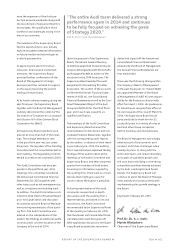 10
10 -
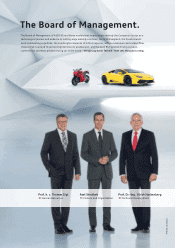 11
11 -
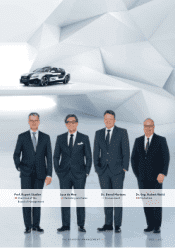 12
12 -
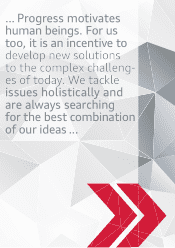 13
13 -
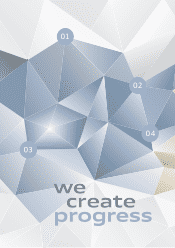 14
14 -
 15
15 -
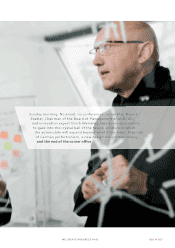 16
16 -
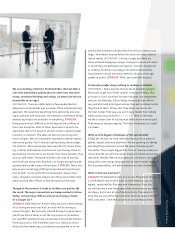 17
17 -
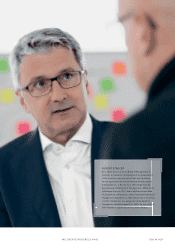 18
18 -
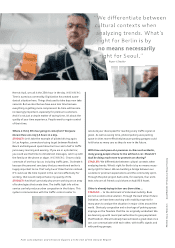 19
19 -
 20
20 -
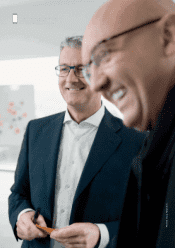 21
21 -
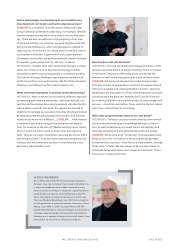 22
22 -
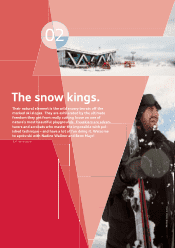 23
23 -
 24
24 -
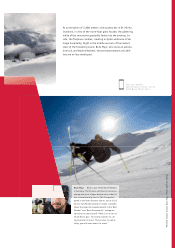 25
25 -
 26
26 -
 27
27 -
 28
28 -
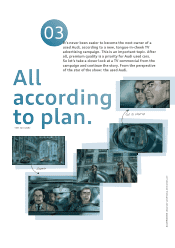 29
29 -
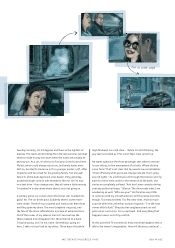 30
30 -
 31
31 -
 32
32 -
 33
33 -
 34
34 -
 35
35 -
 36
36 -
 37
37 -
 38
38 -
 39
39 -
 40
40 -
 41
41 -
 42
42 -
 43
43 -
 44
44 -
 45
45 -
 46
46 -
 47
47 -
 48
48 -
 49
49 -
 50
50 -
 51
51 -
 52
52 -
 53
53 -
 54
54 -
 55
55 -
 56
56 -
 57
57 -
 58
58 -
 59
59 -
 60
60 -
 61
61 -
 62
62 -
 63
63 -
 64
64 -
 65
65 -
 66
66 -
 67
67 -
 68
68 -
 69
69 -
 70
70 -
 71
71 -
 72
72 -
 73
73 -
 74
74 -
 75
75 -
 76
76 -
 77
77 -
 78
78 -
 79
79 -
 80
80 -
 81
81 -
 82
82 -
 83
83 -
 84
84 -
 85
85 -
 86
86 -
 87
87 -
 88
88 -
 89
89 -
 90
90 -
 91
91 -
 92
92 -
 93
93 -
 94
94 -
 95
95 -
 96
96 -
 97
97 -
 98
98 -
 99
99 -
 100
100 -
 101
101 -
 102
102 -
 103
103 -
 104
104 -
 105
105 -
 106
106 -
 107
107 -
 108
108 -
 109
109 -
 110
110 -
 111
111 -
 112
112 -
 113
113 -
 114
114 -
 115
115 -
 116
116 -
 117
117 -
 118
118 -
 119
119 -
 120
120 -
 121
121 -
 122
122 -
 123
123 -
 124
124 -
 125
125 -
 126
126 -
 127
127 -
 128
128 -
 129
129 -
 130
130 -
 131
131 -
 132
132 -
 133
133 -
 134
134 -
 135
135 -
 136
136 -
 137
137 -
 138
138 -
 139
139 -
 140
140 -
 141
141 -
 142
142 -
 143
143 -
 144
144 -
 145
145 -
 146
146 -
 147
147 -
 148
148 -
 149
149 -
 150
150 -
 151
151 -
 152
152 -
 153
153 -
 154
154 -
 155
155 -
 156
156 -
 157
157 -
 158
158 -
 159
159 -
 160
160 -
 161
161 -
 162
162 -
 163
163 -
 164
164 -
 165
165 -
 166
166 -
 167
167 -
 168
168 -
 169
169 -
 170
170 -
 171
171 -
 172
172 -
 173
173 -
 174
174 -
 175
175 -
 176
176 -
 177
177 -
 178
178 -
 179
179 -
 180
180 -
 181
181 -
 182
182 -
 183
183 -
 184
184 -
 185
185 -
 186
186 -
 187
187 -
 188
188 -
 189
189 -
 190
190 -
 191
191 -
 192
192 -
 193
193 -
 194
194 -
 195
195 -
 196
196 -
 197
197 -
 198
198 -
 199
199 -
 200
200 -
 201
201 -
 202
202 -
 203
203 -
 204
204 -
 205
205 -
 206
206 -
 207
207 -
 208
208 -
 209
209 -
 210
210 -
 211
211 -
 212
212 -
 213
213 -
 214
214 -
 215
215 -
 216
216 -
 217
217 -
 218
218 -
 219
219 -
 220
220 -
 221
221 -
 222
222 -
 223
223 -
 224
224 -
 225
225 -
 226
226 -
 227
227 -
 228
228 -
 229
229 -
 230
230 -
 231
231 -
 232
232 -
 233
233 -
 234
234 -
 235
235 -
 236
236 -
 237
237 -
 238
238 -
 239
239 -
 240
240 -
 241
241 -
 242
242 -
 243
243 -
 244
244 -
 245
245 -
 246
246 -
 247
247 -
 248
248 -
 249
249 -
 250
250 -
 251
251 -
 252
252 -
 253
253 -
 254
254 -
 255
255 -
 256
256 -
 257
257 -
 258
258 -
 259
259 -
 260
260 -
 261
261 -
 262
262 -
 263
263 -
 264
264 -
 265
265 -
 266
266 -
 267
267 -
 268
268 -
 269
269 -
 270
270 -
 271
271 -
 272
272 -
 273
273 -
 274
274 -
 275
275 -
 276
276 -
 277
277 -
 278
278 -
 279
279 -
 280
280 -
 281
281 -
 282
282 -
 283
283 -
 284
284 -
 285
285 -
 286
286 -
 287
287 -
 288
288 -
 289
289 -
 290
290 -
 291
291 -
 292
292 -
 293
293 -
 294
294
 |
 |

DESIGN THINKING
Design thinking is a method of developing ideas and innovation.
Established at Stanford University by David Kelley, Bernie Roth,
Terry Winograd and Larry Leifer, it encourages inventive thinking.
Interdisciplinary teams create new products, technologies and ser-
vices in a six-stage process. A well-known example of an innovation
that is the result of design thinking is the “Embrace Warmer.”
This sleeping bag with heat store serves as a substitute incubator
in regions with no electricity supply and regulates the body tempera-
ture of the newborn baby. Students developed the “Embrace
Warmer” in 2007 at the d.school in Stanford.
Design thinking places the needs of the customer at the center.
The fi rst three process stages involve understanding the problem,
observing the users and defi ning typical customers. Ideas are
collected through brainstorming, and prototypes built and tested.
If customers are not satisfi ed with the product or service, the
process or its individual stages are repeated. Operating in variable
workspaces with mobile desks and whiteboards, the teams
visualize ideas with the help of sticky notes. Having enough space
to build prototypes is also important.
The message of design thinking is this : Especially in the connected
age, an innovation involves more than simply an individual having
a bright idea. It all comes down to teamwork, where ideas quickly
undergo a reality check.
UNDER-
STAND
DEFINE
POINT
OF
VIEW
IDEATE PROTO-
TYPE TEST
OBSERVE
How will the urban premium customer buy their car in the
future ? Online ?
WEINBERG : In any event they will expect products and
solutions that are tailored exactly to their requirements. The
diversifi cation of lifestyles is fueling individual expectations.
STADLER : There will be two stages to buying a car, the virtual
and the real. The test drive won’t go away. Nor will the face-
to-face sales consultation. Rather, we will create a new way
of interfacing with customers. The Audi City in Berlin, for ex-
ample, is a far cry from a classic showroom. It is a place where
our brand and products can be experienced virtually. So we
transfer the technologies of the Audi City to our dealers, too.
The Audi VR experience is our latest coup. This involves cus-
tomers putting on virtual reality glasses at the dealer which
enable them to sit virtually in the driver’s seat of their individu-
ally confi gured Audi.
What direction will design take in the future ?
STADLER : In a world that is changing rapidly and incessantly,
our new design sets a counterpoint. It is timeless but also
progressive. It gives visible expression to “Vorsprung durch
Technik,” lightweight construction and quattro in each of
our models. The new Audi A will be the fi rst example of this.
We will make a unique statement in the full-size category
with its design approach.
020 >> 021WE CREATE PROGRESS >> 01
